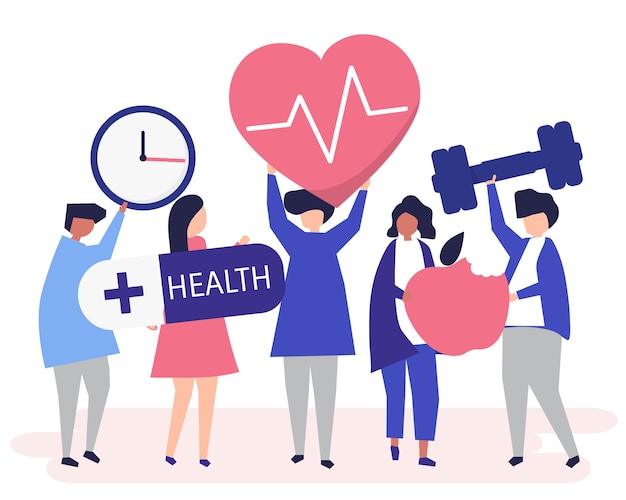According to one of the most recent worldwide consensus statement on concussion in sport, go back to play (RTP) after a youngster or teen experiences a sport trauma ought to be a detailed, finished, exercise-limited, procedure which can start after a first period of 24-48 hours of both loved one physical and cognitive remainder:
| Phase | Task | Goal |
| 1. Symptom-limited activity * | Daily activities that do not provoke signs | Steady reintroduction of work/school activities |
| 2. Light cardio exercise | Strolling or fixed biking at slow-moving to medium pace. No resistance training | Increase heart rate |
| 3. Sport-specific exercise | Skating drills in ice hockey, running drills in football. No head influence tasks | Include movement |
| 4. Non-contact training drills | Progression to harder training drills, e.g. passing drills in football and ice hockey; may begin dynamic resistance training | Workout, control and boosted assuming |
| 5. Complete call method | Complying with medical clearance, join normal training activities | Bring back confidence and enable mentoring staff to examine practical skills |
| 6. Return to play | Regular video game play |
Read here knowconcussion At our site
- 24 hr in between actions: Normally, each action should take a minimum of 24-hour, so that, presuming the athlete does not experience a reoccurrence of trauma signs and symptoms at rest or with workout as she proceeds through the workout program, she will be able to return to sporting activities in regarding a week’s time after signs have
- gotten rid of. Fall back if signs and symptoms return : If the student-athlete experiences a recurrence of blast symptoms during any one of the steps, they need to hang back to the previous level at which they were symptom-free, and attempt to proceed once more after an additional 24-hour duration of rest has actually passed.
- 7-day waiting duration prior to beginning in absence of neurocognitive testing. In the absence of daily screening by a healthcare expert with trauma know-how (qualified sports fitness instructor, school/team/primary care/sports medicine physician, neuropsychologist) to get rid of a student-athlete to begin the graduated return-to-play protocol, a student-athlete should observe a 7 day rest/recovery period before beginning the protocol. This means that, for such athletes, go back to sports will certainly take at least 2 weeks. Some leading concussion experts, including Dr. Rosemarie Scolaro Moser, a sports blast neuropsychologist featured in the MomsTEAM PBS docudrama, The Most Intelligent Team: Making High School Football Safer, recommend that children and teen take a minimum of 3 weeks off prior to returning to sporting activities after a concussion.
State regulations on go back to play vary
According to data released in March 2016 by the National Athletic Trainers’ Organization, 44 percent of states now need that a graduated return-to-play procedure containing a minimum of five actions (with no more than 2 actions occurring on eventually) is carried out for professional athletes returning back to task from a blast, which is a 24 percent enhancement from the 2014-2015 school year.
The golden state recently ended up being the first state to mandate a minimal 7-day waiting duration after a concussion prior to a go back to sports for interscholastic professional athletes, and to need the successful conclusion of a finished return-to-play exercise method monitored by a healthcare professional which can just begin when a student-athlete is no more experiencing blast signs and symptoms.
While much of the young people sporting activities trauma safety regulations gone by the states since 2009 have broad language enabling any type of certified healthcare professional to make the return-to-play choice, researches reveal that several primary care doctors do not have the experience called for to make go back to play decisions. Due to the fact that they have much more training and experience in concussion diagnosis and monitoring, certified sports instructors, team physicians, and neuropsychologists are generally the very best certified to determine when it is secure for a professional athlete to return to play.
Specialists caution that, while an estimated 80 to 90% of concussions heal spontaneously in the first 7 to 10 days, children and teens might require a longer rest period and/or extended duration of non-contact workout than grownups, because their developing brains cause them to experience a different physiological action to blast than adults and take longer to recoup, and they have various other certain risk variables, such as the danger of 2nd impact disorder.
A number of recent studies recommend that concussed teens, maybe much more than younger and older professional athletes, take longer to recuperate full cognitive function and ought to be held up of play longer. One study discovered that concussed teens have difficulty recouping the ability for high degree thinking after injury and might need extended recovery prior to complete recovery of supposed exec feature is attained, with researchers at the University of Oregon and University of British Columbia finding that exec function was interrupted in concussed teenagers for approximately 2 months after injury when compared to healthy and balanced control subjects.
In useful terms, this more conservative method means that:
- Youngsters and teens must not, under any kind of situations, be enabled to return to practice or play till totally devoid of signs and symptoms
- No go back to use the exact same day as the injury, no matter affordable level (as is currently the regulation in all 50 states); and
- Changing elements (i.e. previous background of trauma, discovering specials needs), tackle even more importance in the examination and monitoring of concussion.
Non-compliance is significant trouble
In their wish to go back to the playing field, nevertheless, some senior high school professional athletes stop working to adhere to return-to-play standards. A 2009 study by researchers at Nationwide Children’s Medical facility in Columbus, Ohio, as an example, located that at least 40.5% and 15.0% of athletes that sustained blasts went back to play prematurely under the now-outdated American Academy of Neurology (AAN) and after that current Zurich return-to-play guidelines.
A 2011 study nevertheless, showed for the very first time the essential role computerized neuropsychological screening is playing in concussion analysis and RTP choices. Professional athletes who had actually taken a pre-season, standard ImPACT digital neuropsychological examination, and took the ImPACT test once again after thought concussion were less most likely to return to use the very same day, and much less likely to go back to play within a week of their injury, than the three out of four injured athletes who did not undertake such screening.
The authors recommended three possible factors:
- that the digital tests are much more trustworthy in evaluating whether an athlete’s cognitive operating had gone back to baseline than self-reporting by professional athletes of signs and symptoms (which, for a quick go back to play, a professional athlete might downplay or fall short to report completely)(a theory which was verified in a more current research;
- that making use of such examinations by those providing trauma monitoring leads them to be more conventional in return-to-play decisions; and
- that neurocognitive testing is made use of regularly in cases of severe traumas that need prolonged recuperation times before go back to play.
Post-exercise neurocognitive testing suggested
A 2013 study of concussed student-athletes that reported no signs and symptoms and had actually returned to baseline on electronic neurocognitive examinations taken prior to starting the graduated return to sporting activities method, located that more than a quarter (27.7%) exhibited declines in spoken and aesthetic memory on the tests after moderate exercise.
The searchings for triggered sports blast neuropsychologist Neal McGrath, Ph.D. of Sports Trauma New England and his colleagues to recommend that neurocognitive testing become an important part of the athletic fitness instructor’s post-exertion examination protocol which student-athletes should not be gotten rid of for full contact task until they have the ability to show security, particularly in memory performance, on such post-exertion neurocognitive concussion testing.
Given the unreliable nature of self-reported signs in professional athletes, a group normally inspired to go back to play and decrease signs, the level of sensitivity of computerized neurocognitive screening to insufficient recovery and the importance of identifying any indications that an athlete might not continue to be stable in his/her baseline operating prior to return to call sporting activities action, post-exertion neurocognitive screening appears to be a logical device to take into consideration.
Our reasoning, said McGrath, is that because workout is understood to cause reoccurrence of signs in some athletes that may not be totally recuperated, and given that neurocognitive screening has been shown to reveal continuing cognitive deficiencies in professional athletes who state or really feel that they are symptom-free any kind of considerable decrease in post-exercise cognitive examination scores for those professional athletes that have actually reached the point of sensation fully symptom-free, with resting neurocognitive scores that are back to baseline, would certainly show that more recovery time is needed before going back to get in touch with sports activity. We would certainly follow those athletes till their post-exercise neurocognitive examination scores remain steady at standard levels before clearing them to go back to play.
As young athletes have a tendency to consider just a tiny subset of their potential symptoms when reporting their healing or saying they are back to normal after blast care is urged in thinking about professional athletes’ self-reported symptoms in their return-to-play choices, and the exact same care is necessitated in relying entirely on neurocognitive examination scores having actually gone back to normal before the finished workout procedure is begun.
Certainly, a recent research study of concussed student-athletes who reported no symptoms and had gone back to baseline on computerized neurocognitive examinations taken prior to starting the graduated workout procedure, located that greater than a quarter exhibited decreases in spoken and aesthetic memory on the examinations after modest exercise, motivating a recommendation that student-athletes not be gotten rid of for complete call activity till they are able to show stability, especially in memory performance, on neurocognitive trauma testing executed after the workout procedure is started. While this was just one research study, additional post-exercise neurocognitive screening may eventually become a fundamental part of the RTP protocol.
 Return to Play After Trauma Is Step-By-Step Process |
